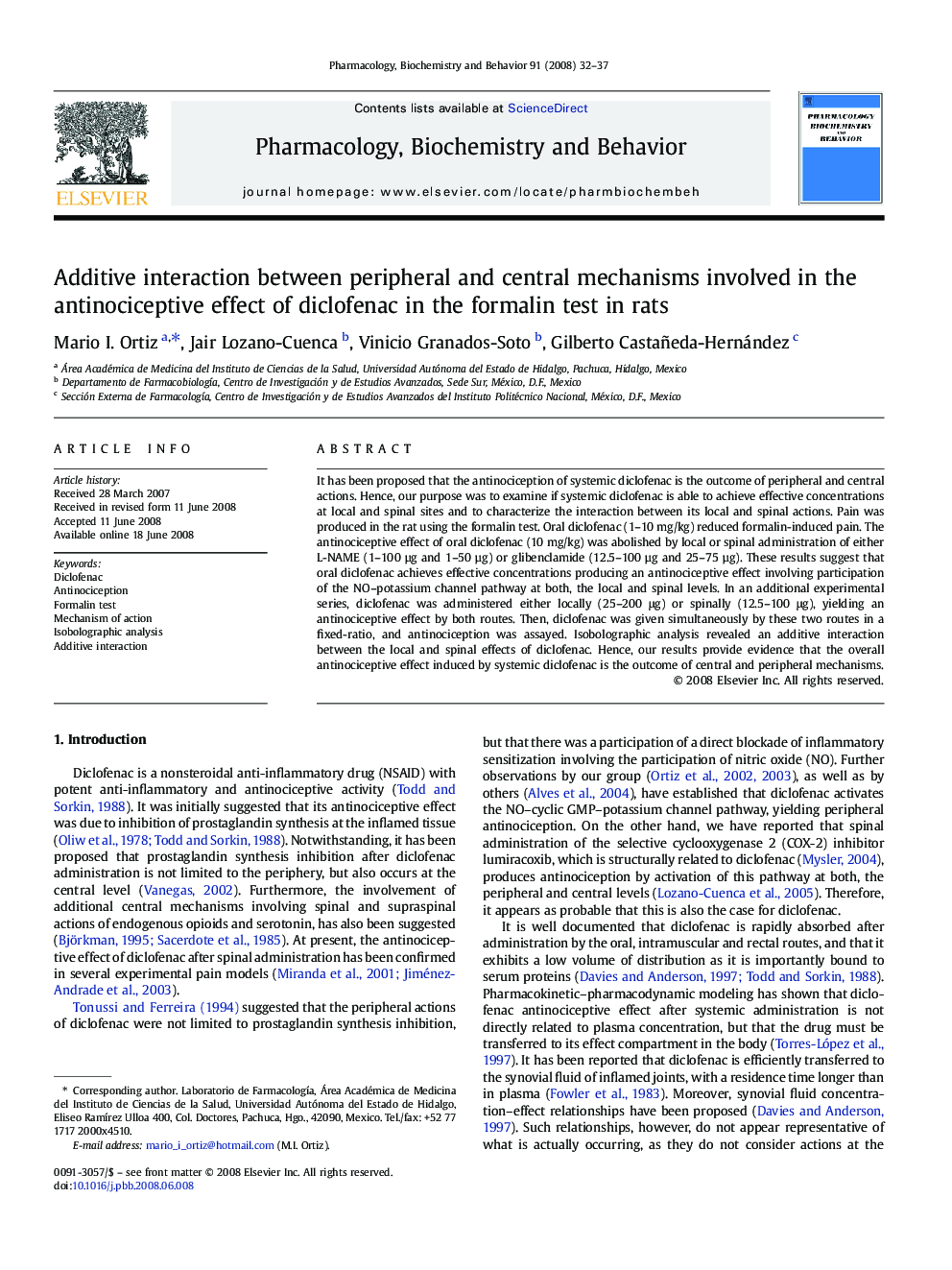| Article ID | Journal | Published Year | Pages | File Type |
|---|---|---|---|---|
| 2014275 | Pharmacology Biochemistry and Behavior | 2008 | 6 Pages |
Abstract
It has been proposed that the antinociception of systemic diclofenac is the outcome of peripheral and central actions. Hence, our purpose was to examine if systemic diclofenac is able to achieve effective concentrations at local and spinal sites and to characterize the interaction between its local and spinal actions. Pain was produced in the rat using the formalin test. Oral diclofenac (1-10 mg/kg) reduced formalin-induced pain. The antinociceptive effect of oral diclofenac (10 mg/kg) was abolished by local or spinal administration of either L-NAME (1-100 µg and 1-50 µg) or glibenclamide (12.5-100 µg and 25-75 µg). These results suggest that oral diclofenac achieves effective concentrations producing an antinociceptive effect involving participation of the NO-potassium channel pathway at both, the local and spinal levels. In an additional experimental series, diclofenac was administered either locally (25-200 μg) or spinally (12.5-100 μg), yielding an antinociceptive effect by both routes. Then, diclofenac was given simultaneously by these two routes in a fixed-ratio, and antinociception was assayed. Isobolographic analysis revealed an additive interaction between the local and spinal effects of diclofenac. Hence, our results provide evidence that the overall antinociceptive effect induced by systemic diclofenac is the outcome of central and peripheral mechanisms.
Keywords
Related Topics
Life Sciences
Biochemistry, Genetics and Molecular Biology
Biochemistry
Authors
Mario I. Ortiz, Jair Lozano-Cuenca, Vinicio Granados-Soto, Gilberto Castañeda-Hernández,
